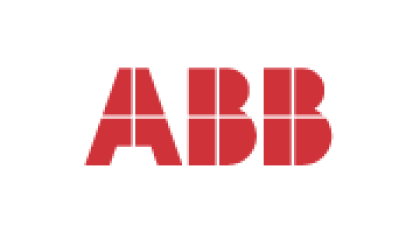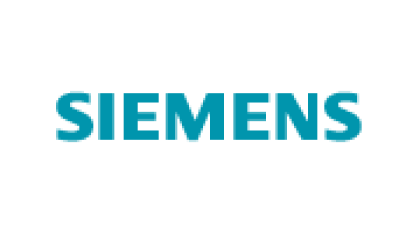Industrial Process Automation: Streamlining Operations for Efficiency and Innovation
Industrial process automation is revolutionizing the way businesses operate by leveraging advanced technologies to optimize processes, reduce costs, enhance productivity, and drive innovation. In this article, we will explore the concept of industrial process automation, its benefits, key components, and the role of technology in transforming industries.
Understanding Industrial Process Automation
Industrial process automation refers to the use of technology and control systems to automate and optimize various manufacturing and production processes. These processes may include assembly lines, chemical processing, power generation, food production, pharmaceutical manufacturing, and more. Automation systems integrate hardware and software components to monitor, control, and manage industrial processes, resulting in improved efficiency, accuracy, and reliability.
Benefits of Industrial Process Automation
Implementing industrial process automation offers numerous benefits to businesses across different sectors:
- Increased Efficiency: Automation streamlines workflows, reduces manual intervention, and minimizes errors, leading to higher production rates and improved operational efficiency.
- Cost Savings: By optimizing resource utilization, minimizing waste, and reducing labor costs, automation helps businesses achieve significant cost savings over time.
- Enhanced Quality Control: Automation systems ensure consistent product quality through precise control, monitoring, and real-time data analysis, reducing defects and improving customer satisfaction.
- Improved Safety: Automation minimizes the risk of accidents and injuries by automating hazardous tasks, implementing safety protocols, and providing real-time monitoring of equipment and processes.
- Scalability and Flexibility: Automation solutions can scale to accommodate changing production demands, adapt to new technologies, and support agile manufacturing practices.
- Data-Driven Decision Making: Automation systems collect and analyze vast amounts of data, providing insights that enable informed decision-making, process optimization, and predictive maintenance.
Key Components of Industrial Process Automation
Industrial process automation systems comprise several key components that work together to automate and control manufacturing processes:
- Sensors and Actuators: Sensors detect physical variables such as temperature, pressure, flow, and position, while actuators control equipment and machinery based on sensor inputs.
- Programmable Logic Controllers (PLCs): PLCs are microprocessor-based controllers that automate control tasks by executing logic programs and communicating with sensors, actuators, and other automation components.
- Human-Machine Interfaces (HMIs): HMIs provide operators with visual interfaces to monitor process parameters, control equipment, and receive real-time alerts and notifications.
- Supervisory Control and Data Acquisition (SCADA) Systems: SCADA systems monitor and control industrial processes from a centralized location, enabling operators to oversee multiple systems, analyze data, and make informed decisions.
- Distributed Control Systems (DCS): DCSs are used in large-scale industrial plants to control and optimize complex processes, coordinate multiple control loops, and ensure seamless integration of automation components.
- Industrial Networking and Communication: Networking technologies such as Ethernet, fieldbus protocols (e.g., Profibus, Modbus), and wireless communication enable data exchange and connectivity between automation devices and systems.
Role of Technology in Industrial Process Automation
Technological advancements have played a significant role in advancing industrial process automation:
- Internet of Things (IoT): IoT technologies enable connectivity and data exchange between sensors, devices, and systems, facilitating remote monitoring, predictive maintenance, and real-time analytics.
- Artificial Intelligence (AI) and Machine Learning: AI and machine learning algorithms analyze data patterns, predict trends, optimize processes, and enable autonomous decision-making in automation systems.
- Robotics and Automation: Robotics technologies, including industrial robots, collaborative robots (cobots), and automated guided vehicles (AGVs), perform tasks such as assembly, welding, material handling, and logistics automation.
- Cloud Computing: Cloud-based automation solutions offer scalability, data storage, analytics, and remote access to automation systems, enhancing flexibility and agility in operations.
- Cybersecurity: With the increasing connectivity of automation systems, cybersecurity measures such as firewalls, encryption, authentication, and intrusion detection are crucial to protect against cyber threats and data breaches.
Applications of Industrial Process Automation
Industrial process automation finds applications across various industries, including:
- Manufacturing: Automation in manufacturing includes assembly lines, robotic welding, CNC machining, 3D printing, and quality control systems.
- Chemical Processing: Automation optimizes chemical production, batch processing, safety systems, and regulatory compliance in chemical plants.
- Oil and Gas: Automation solutions monitor and control drilling operations, production facilities, pipeline networks, and refinery processes.
- Food and Beverage: Automation in food production includes processing, packaging, labeling, and quality assurance to ensure food safety and consistency.
- Pharmaceuticals: Automation in pharmaceutical manufacturing ensures precise dosing, mixing, filling, and packaging of medications while maintaining compliance with regulatory standards.
- Utilities: Automation in utilities includes power generation, water treatment, distribution systems, and smart grid management for efficient resource utilization.
Future Trends in Industrial Process Automation
The future of industrial process automation is marked by several emerging trends and technologies:
- Industry 4.0: The integration of IoT, AI, big data analytics, cloud computing, and cybersecurity in automation systems, enabling smart factories, predictive maintenance, and real-time decision-making.
- Digital Twins: Digital twin technology creates virtual replicas of physical assets, allowing for simulation, optimization, and predictive analysis of processes and equipment.
- Edge Computing: Edge computing brings processing power closer to automation devices and sensors, enabling faster data processing, reduced latency, and real-time control in distributed systems.
- Additive Manufacturing: Automation in additive manufacturing (3D printing) processes is evolving to support mass customization, rapid prototyping, and complex part production in various industries.
- Sustainable Automation: Emphasis on sustainability includes energy-efficient automation solutions, waste reduction, recycling processes, and environmental impact mitigation.
Conclusion
Industrial process automation is a transformative force that drives efficiency, innovation, and competitiveness across industries. By leveraging advanced technologies, automation systems optimize processes, improve quality control, enhance safety, and enable data-driven decision-making. As businesses embrace automation, staying abreast of the latest trends and technologies is essential to harness the full potential of industrial process automation and achieve operational excellence in the dynamic and evolving landscape of manufacturing and production.

























